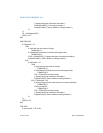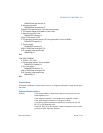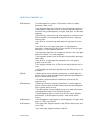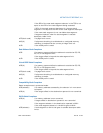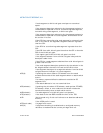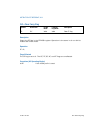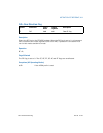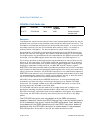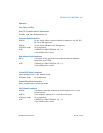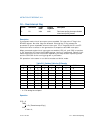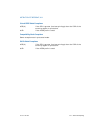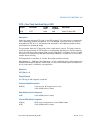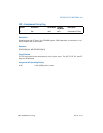
3-108 Vol. 2A CLFLUSH—Flush Cache Line
INSTRUCTION SET REFERENCE, A-M
CLFLUSH—Flush Cache Line
Description
Invalidates the cache line that contains the linear address specified with the source
operand from all levels of the processor cache hierarchy (data and instruction). The
invalidation is broadcast throughout the cache coherence domain. If, at any level of
the cache hierarchy, the line is inconsistent with memory (dirty) it is written to
memory before invalidation. The source operand is a byte memory location.
The availability of CLFLUSH is indicated by the presence of the CPUID feature flag
CLFSH (bit 19 of the EDX register, see “CPUID—CPU Identification” in this chapter).
The aligned cache line size affected is also indicated with the CPUID instruction (bits
8 through 15 of the EBX register when the initial value in the EAX register is 1).
The memory attribute of the page containing the affected line has no effect on the
behavior of this instruction. It should be noted that processors are free to specula-
tively fetch and cache data from system memory regions assigned a memory-type
allowing for speculative reads (such as, the WB, WC, and WT memory types).
PREFETCHh instructions can be used to provide the processor with hints for this spec-
ulative behavior. Because this speculative fetching can occur at any time and is not
tied to instruction execution, the CLFLUSH instruction is not ordered with respect to
PREFETCHh instructions or any of the speculative fetching mechanisms (that is, data
can be speculatively loaded into a cache line just before, during, or after the execu-
tion of a CLFLUSH instruction that references the cache line).
CLFLUSH is only ordered by the MFENCE instruction. It is not guaranteed to be
ordered by any other fencing or serializing instructions or by another CLFLUSH
instruction. For example, software can use an MFENCE instruction to insure that
previous stores are included in the write-back.
The CLFLUSH instruction can be used at all privilege levels and is subject to all
permission checking and faults associated with a byte load (and in addition, a
CLFLUSH instruction is allowed to flush a linear address in an execute-only segment).
Like a load, the CLFLUSH instruction sets the A bit but not the D bit in the page
tables.
The CLFLUSH instruction was introduced with the SSE2 extensions;
however, because it has its own CPUID feature flag, it can be implemented in
IA-32 processors that do not include the SSE2 extensions. Also, detecting
the presence of the SSE2 extensions with the CPUID instruction does not
guarantee that the CLFLUSH instruction is implemented in the processor.
CLFLUSH operation is the same in non-64-bit modes and 64-bit mode.
Opcode Instruction 64-Bit Mode Compat/
Leg Mode
Description
0F AE /7 CLFLUSH m8 Valid Valid Flushes cache line
containing m8.



